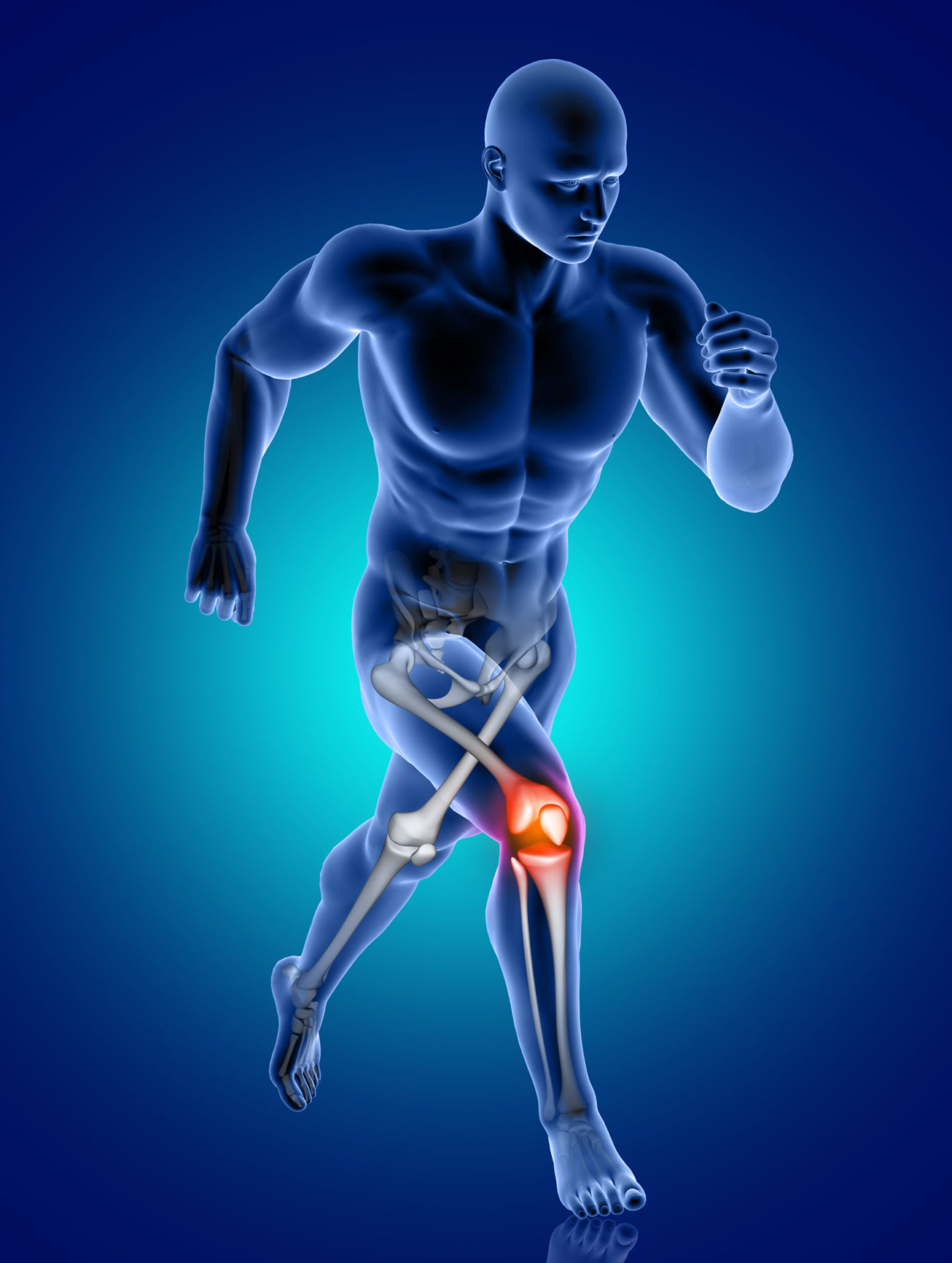ACL Injuries
Knee injuries, particularly among athletes, are extremely common. One of the most common types of knee injuries comes from damage to the ACL, or Anterior Cruciate Ligament. In this guide, we will discuss injuries of the ACL, how they occur and the treatment options that are available.

About ACL Injuries
The Anterior Cruciate Ligament sits just behind the kneecap and is responsible for connecting the thighbone to the shin. This band of tissue also is essential for keeping the tibia (shin) in place so that it does not slide forward in front of the femur (thighbone). It also provides additional stability in the knee, preventing over rotation or over extension of the leg.
Injuries to the ligament vary based on the condition's severity. There are three main classifications: the ACL can be slightly sprained or stretched but still intact, it can be torn only partially or it can be completely torn. Usually the seriousness of the injury trends with how the injury occurs. While slight tears do happen, a complete tear tends to be more common.
Symptoms of this condition include knee pain, a loud “popping” sound or sensation, swelling, loss of movement in the knee and inability to bare weight on the affected leg.
How Do ACL Injuries Occur?
It takes a decent amount of stress on the body or specific movements of the knee to cause an ACL sprain or tear, which is why this condition is more common in athletes than just a normal person walking down the street. This injury typically occurs from the following movements:
- Changing direction rapidly while in motion
- Stopping suddenly (the faster you’re running the worse it can be)
- Slowing down incorrectly while running
- Direct blows to the knee
- Landing wrong after a jump
Sports with repeated leg movements, high speed running and frequent jumps are the most at risk for these types of injuries: basketball, football, downhill skiing, soccer and volleyball, just to name a few.
Some studies have suggested that women have a higher chance of acquiring an ACL injury than men due to the difference in hormones, body structure and strength level. Other factors to consider in either gender include poor conditioning, improper or ill-fitting equipment (including pads, shoes and bindings) and training with improper form while exercising.
No matter the type of knee injury or how it occurs, it is important to contact your primary care doctor or an orthopedic surgeon right away to assess the condition. When continuously used and left untreated, the injury can progress and become more severe.
What Are My Treatment Options?
The first course of treatment for any knee injury is the RICE method: Rest, Ice, Compress and Elevate. If your primary care physician or urgent care provider suspects an ACL injury, they will refer you to an orthopedic surgeon. Though an x-ray cannot show damage to the ligament itself, they are often the first radiologic test ordered because they are easily available in-office and they can show if there is a break in any of the bones at or around the knee. If no break is detected, an MRI is often (but not always) ordered to confirm the ACL injury and its severity.
ACL injuries should not be left alone. Even if surgery is not necessary, other non-surgical interventions are used to help treat the injury to ensure proper healing. Typically, non-operative methods are used for elderly patients and those with low activity level because the risk of re-injury is extremely low. Special bracing paired with physical therapy are the go-to treatment options for these types of patients.
When considering the activity level of the younger and athletic patient, surgery is the preferred treatment route. Typically, ACL surgery requires a complete reconstruction of the ligament in order to provide the proper stability that the leg needs. Your orthopedic surgeon will use a tissue graft to replace your torn ligament. There are a few different graft options available, but making the correct choice is up to you and your orthopedic surgeon. Surgery is usually performed arthroscopically in an outpatient setting unless the injury is extremely severe and includes broken bones.
While simply stitching a partially torn ACL is technically an option, is it not often recommended because it carries a lower success rate.
Due to the nature of the tear, a full recovery from an ACL reconstruction can take 9-12 months. The first few weeks after surgery will consist of resting, icing, anti-inflammatory medication and walking with crutches. Your surgeon may also set you up with different types of braces as your recovery progresses to protect the knee. As time goes on, your surgeon will prescribe physical therapy to retain stability in the knee. Initially your physical therapist will work on regaining range of motion then gradually progressing to strength exercises and the functionality to return to everyday and sporting activities.
How Can Michigan Surgery Specialists Help?
Our team of experts has helped many people suffering from ACL sprains and tears. The surgeons at Michigan Surgery Specialists will help you get back to the activities that you love.
Request an appointment with one of our Orthopedic Surgeons today!
Meet our physicians



